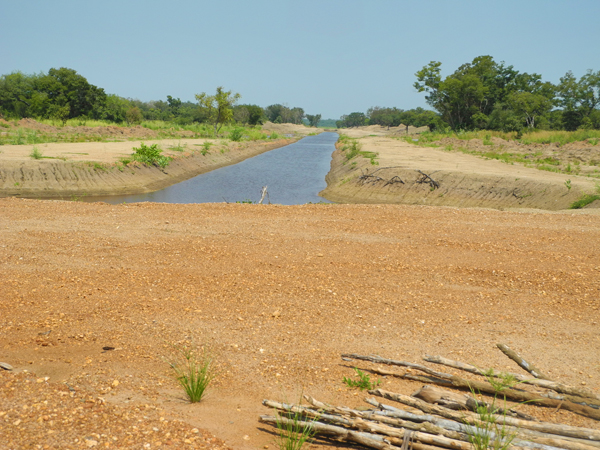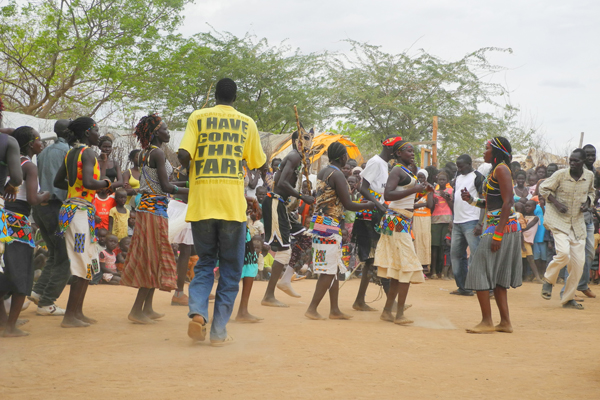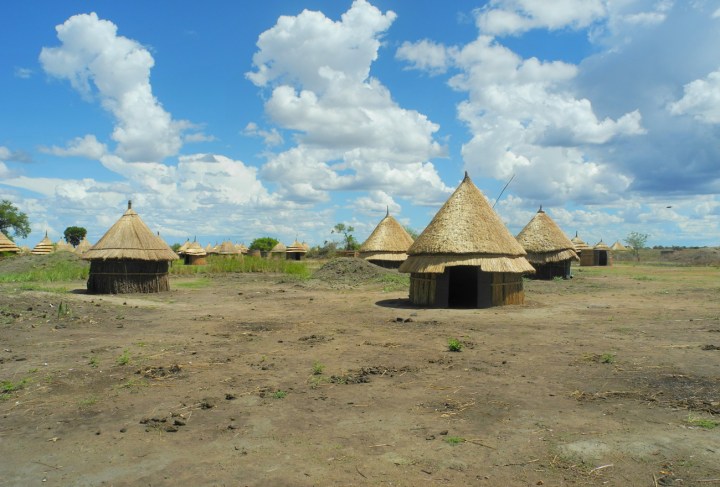A new report by Human Rights Watch investigates Ethiopia’s “villagisation” programme, hailed by the government as a successful voluntary relocation project, but which HRW claims is seeing farmers moved to accommodate foreign land investors. By KHADIJA PATEL.
The language of Human Rights Watch reports is designed to impress the failures of humanity without betraying the calm of emotional detachment. At the heart of these reports lie voices cloaked in the anonymity of “a village elder” in Ethiopia. Angry, desperate and resigned to his powerlessness in the face of repression, he says, “The government is killing our people through starvation and hunger. It is better to attack us in one place than just waiting here together to die. If you attack us, some of us could run and some could survive. But this, we are dying here with our children. Government workers get this salary, but we are just waiting here for death.”
His story is part of a report released on Tuesday, “Waiting Here for Death: Forced Displacement and ‘Villagization’ in Ethiopia’s Gambella Region”, based on data gleaned “from more than 100 interviews” last year in the Gambella region, the Ifo refugee camp in Dadaab and Nairobi, Kenya.
The pastoralist and semi-pastoralist communities of the western Gambella region, numbering some 307,000 people, live in scattered settlements along riversides in an area about 25,802km². According to Human Rights Watch, the Ethiopian government’s “villagisation” programme, part of the country’s “growth and transformation plan”, is forcibly relocating about 45,000 people from Gambella to new villages that lack adequate food, farmland, healthcare and educational facilities.
The bizarrely named “villagisation” programme is intended to group scattered farming communities into small villages of several hundred households with the aim of changing their lifestyles from nomadic pastoralists to new types of agriculture. Altogether the Ethiopian government plans to resettle 1.5-million people by 2013 in four regions: Gambella, Afar, Somali and Benishangul-Gumuz.
“My father was beaten for refusing to go along with some other elders,” one former villager told HRW. “He said, ‘I was born here – my children were born here – I am too old to move so I will stay.’ He was beaten by the army with sticks and the butt of a gun. He had to be taken to hospital. He died because of the beating – he just became weaker and weaker.”
If notions of “Africa” evoke images of emaciated children staring blankly past the camera while flies perch on their foreheads, then Ethiopia has been the poster child for the African picture of drought, disease, malnutrition and death. And years after images of malnourished Ethiopian children first showed across our television screens, with the intent to draw “guilt” funds out of overfed Westerners, chronic food insecurity remains one of Ethiopia’s greatest challenges.
Solutions are, of course, not instantly available.

Photo: Saudi Star’s irrigation canals. According to the report, several small villages used to exist at this location and were moved to make way for Saudi Star’s 10,000 hectare farm development. The irrigation canals were first dug in mid-2010, and the villages were moved in November 2010.
Rural development is crucial to food security and mitigating the effects of poverty in Ethiopia. An estimated 85% of the country’s population live in rural areas positing the success of rural development on the performance of the agriculture sector. Hampered by recurrent droughts, a high population growth rate, environmental degradation and poor economic policies, almost all Ethiopian agriculture is subsistence farming.
Subsistence farmers are entirely dependent on the caprice of rainfall patterns and regularly fall victim to crippling droughts. Large swathes of the country suffer continuously from food insecurity and are often dependent on foreign food aid for survival.
The “villagisation” plan introduced in November 2010 supposedly emphasises rural development while incentivising easier access to education and health facilities.
The Ethiopian government has lauded the programme, confident it will cure Ethiopia of food insecurity. Last November the chairman of Ethiopia’s pastoral affairs standing committee of the house of people’s representative, Mohamed Yousuf told Ethiopian media the programme was already “bearing notable results” and would eventually enable the country’s pastoral community to sustainably alleviate their food insecurity. The path to hell is strewn with good intentions.
Jan Egeland, Europe director at HRW believes the programme has reaped no rewards. “The Ethiopian government’s villagisation programme is not improving access to services for Gambella’s indigenous people, but is instead undermining their livelihoods and food security,” he said. “The government should suspend the programme until it can ensure the necessary infrastructure is in place and people have been properly consulted and compensated for the loss of their land.”
The Ethiopian government insists the programme is voluntary, attributing its “success” to the “overwhelming” willingness of the people to be included. Villagers interviewed by HRW, however, allege that security forces repeatedly threatened, assaulted, and arbitrarily arrested villagers who resisted the transfers. The research indicates the programme is particularly far from meeting the government’s intended aims of improving the infrastructure for Gambella’s residents. On the contrary, it has found the programme has in fact threatened access to basic services.
“Despite the promises of schools and clinics, the regional government’s plan shows that these were not planned for the majority of villages,” the report says.
Of the villages visited by HRW, a grinding mill had been completed in two, and a school and clinic had been built in one, but none was operational. The authorities were also found to have provided a very limited amount of food aid to only five villages, and in just two villages had any land been cleared by the government for agricultural production. When it became apparent that little or no infrastructure or food had been provided, some villagers had simply abandoned the new settlements. Some returned to their old farms, while many of the able-bodied men fled into the bush, to South Sudan, or to the UN refugee camps in Kenya, leaving women, children, the sick and the elderly behind.

Photo: Anuak community members conducting an Anuak cultural celebration dance, at the UNHCR refugee camp in Dadaab, Kenya on June 19, 2011. According to the report, Ethiopia’s Minister of Federal Affairs claims there is no evidence of refugees in Kenya an South Sudan fleeing the villagization program, but according to Anuak community leaders, 623 Anuak arrived in Dadaab between October 2011 and December 2011 alone.
Ethiopia’s minister of federal affairs Shiferaw Teklemariam refutes the HRW account saying its claim is “further evidence of baseless allegation and total fabrication” and that “if this was even remotely true, there must certainly have been an official report from the UN High Commission for Refugees.There is no such report, simply because there are no such refugees.”
Human Rights Watch cites UNHCR statistics that show Kenya’s refugee camps held 1,474 refugees and asylum seekers from Gambella in May 2011 and by December that number had grown to 2,155.
Significantly, the “villagisation” programme is taking place in areas where major land investment deals with foreign firms are underway. Over the course of the last three years, various Indian, Chinese and Saudi Arabian companies have leased a total of 225,012ha of land from the ministry of agriculture to grow cash crops in Gambella, prompting concerns of land grabs.
Villagers insist land that has been essential to their livelihoods such as grazing areas, forests and fields were taken from them with no consultation or compensation. The indigenous peoples of these areas, ethnic Anuak and Nuer among others, have never had formal title to the land and the government says these are “uninhabited” or “underutilised” lands.
The Ethiopian government vehemently denies that the “villagisation” process in Gambella is connected to these leases. “There is no land given to investors dislocating a farmer from his or her farmland,” Koat Thiyang Gew, the director general of Gambella Investment Agency, reportedly told local media. “Most of the investors engaged in agricultural investment received land three or four years ago, before the launching[sic] of the villagisation programme.”
Villagers interviewed by Human Rights Watch say they were told by local government officials that the arrival of foreign investors was the underlying reason for their displacement. One woman said she was told by government officials: “We have some projects to implement here. [Saudi investor name withheld] needs to use this area for a market so you must go.”
The Saudi company in question is, Saudi Star Agricultural Development Plc, owned by billionaire Sheikh Mohammed al- Amoudi, which plans to invest $2.5-billion by 2020 developing a complex rice-farming project in Ethiopia.
By last year, the company had leased 10,000ha in Gambella for 60 years at a cost of $9.42 a hectare annually. Grain, the Barcelona-based advocacy group, has slammed the leases saying domestic farmers are being dispossessed of their land to allow foreigners to farm cash crops not meant for Ethiopian consumption, while millions of Ethiopians rely on foreign food assistance.
“The villagisation programme is being undertaken in the same areas of Ethiopia that the government is leasing to foreign investors for large-scale commercial agricultural operations,” Egeland says. “This raises suspicions about the underlying motives of the programme.”
The current “villagisation” is not the first such programme embarked on by an Ethiopian government. During the 1980s and early 90s similar projects were undertaken. The Ethiopian government at the time blamed reported abuses on “overzealous” party officials working under emergency conditions.
“Villagisation” programmes have not been unique to Ethiopia. Mozambique, Tanzania and Rwanda have all experimented with similar programmes. Unlike those in Ethiopia, Mozambique and Tanzania, Rwanda’s programme was more of a success. Launched in early I997, the “Imidugudu” programme sought to address the housing needs of an estimated 2.5-million refugees returning to Rwanda after the war. Researchers believe the programme suffered the same shortcomings of the Ethiopian programme, but succeeded in winning approbation from international agencies by differentiating itself from other programmes in principle.
So too, the current Ethiopian project relies on support from the multi-donor Protection of Basic Services programme that subsidising health, education, agriculture, roads and water, as well as local government salaries.
“It seems the donor money is being used, at least indirectly, to fund the villagisation programme,” Egeland says. “Donors have a responsibility to ensure their assistance does not facilitate forced displacement and associated violations.”
Foreign donors, including the UK, US, World Bank and European Union, have all professed no direct involvement in the “villagisation” programmes, but have undertaken their own assessments of the programme in Gambella and Benishangul-Gumuz. Their report found the relocations were voluntary, contrary to the view of Human Rights Watch.
In a scenario played out elsewhere in Africa as well, the Ethiopian government is now not beholden to international aid agencies alone – the arrival of international land investors places new obligations on the government. And as international aid to Africa comes under increasing scrutiny in the West, the rights of indigenous populations may well be swallowed by the demands of foreign investment. DM
Read more:
- Human Rights Watch report;
- Western Ethiopia’s Gambella region faces risks head-on in IRIN;
- Saudi Billionaire to Invest $2.5 Billion in Ethiopia Rice Farm in Bloomberg Business Week;
- Overseas aid: why the west gains from investing in Africa’s future in The Guardian.
Main photo: The new village of Bildak in Ethiopia’s Gambella region, which the semi-nomadic Nuer who were forcibly transferred there quickly abandoned in May 2011 because there was no water source for their cattle.
All photos: Human Rights Watch.




















 Become an Insider
Become an Insider